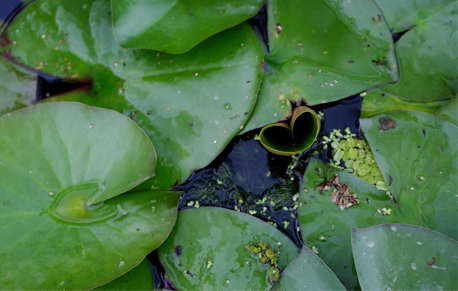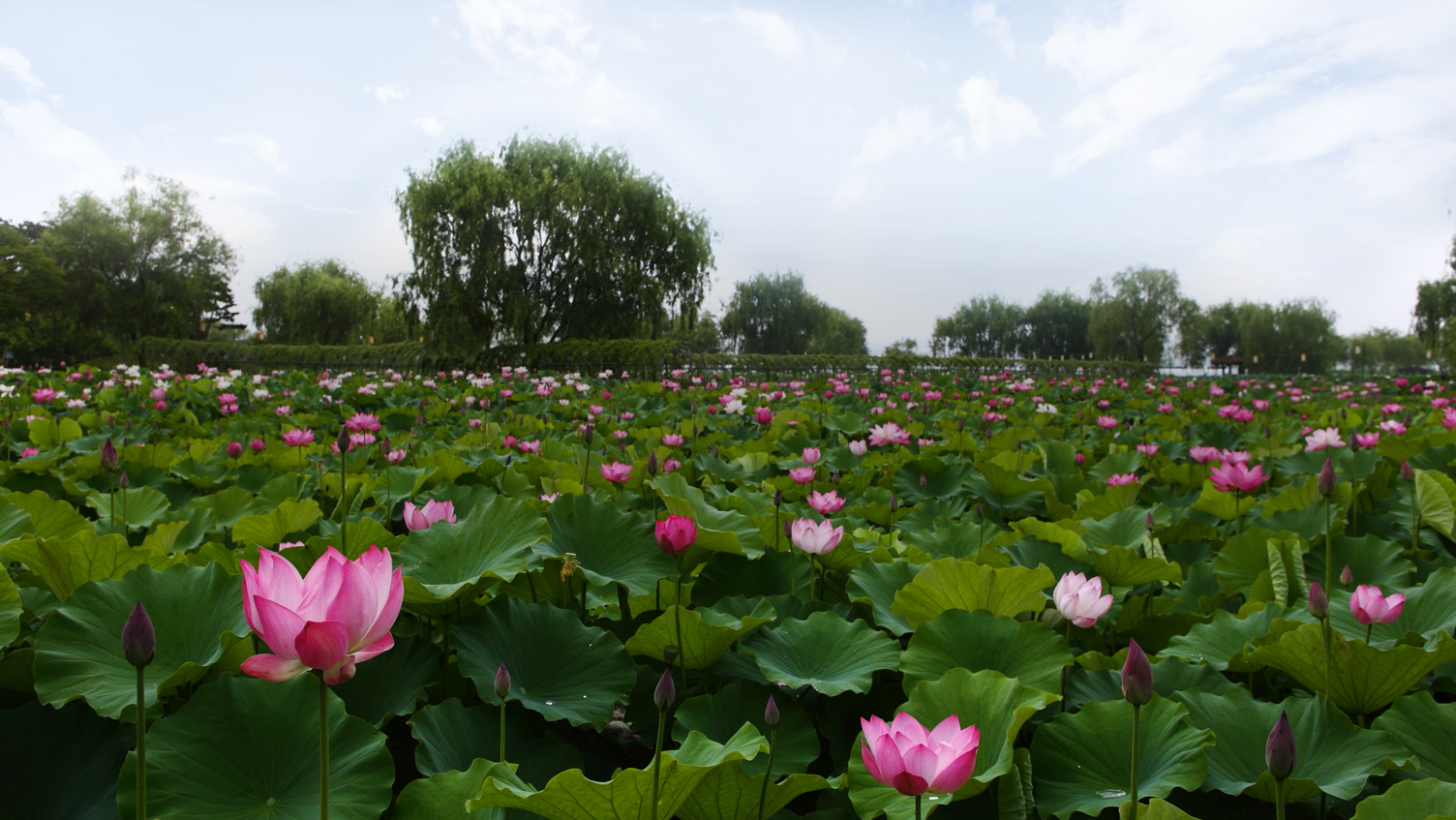
Bright and Fragrant Lotus Flowers
Gungnamji & Busosanseong & Nakhwaam, Buyeo, Chungcheongnam-do
As if an incarnation of their romance, lotus flowers are covering Gungnamji Pond in Buyeo,
a man-made pond made by King Mu of Baekje in 634 with the water drawn from the Baekma River.
In July each year, the pond offers an impressive festival of lotus flowers in the ancient capital of Baekje Kingdom.
The nation’s first artificial pond
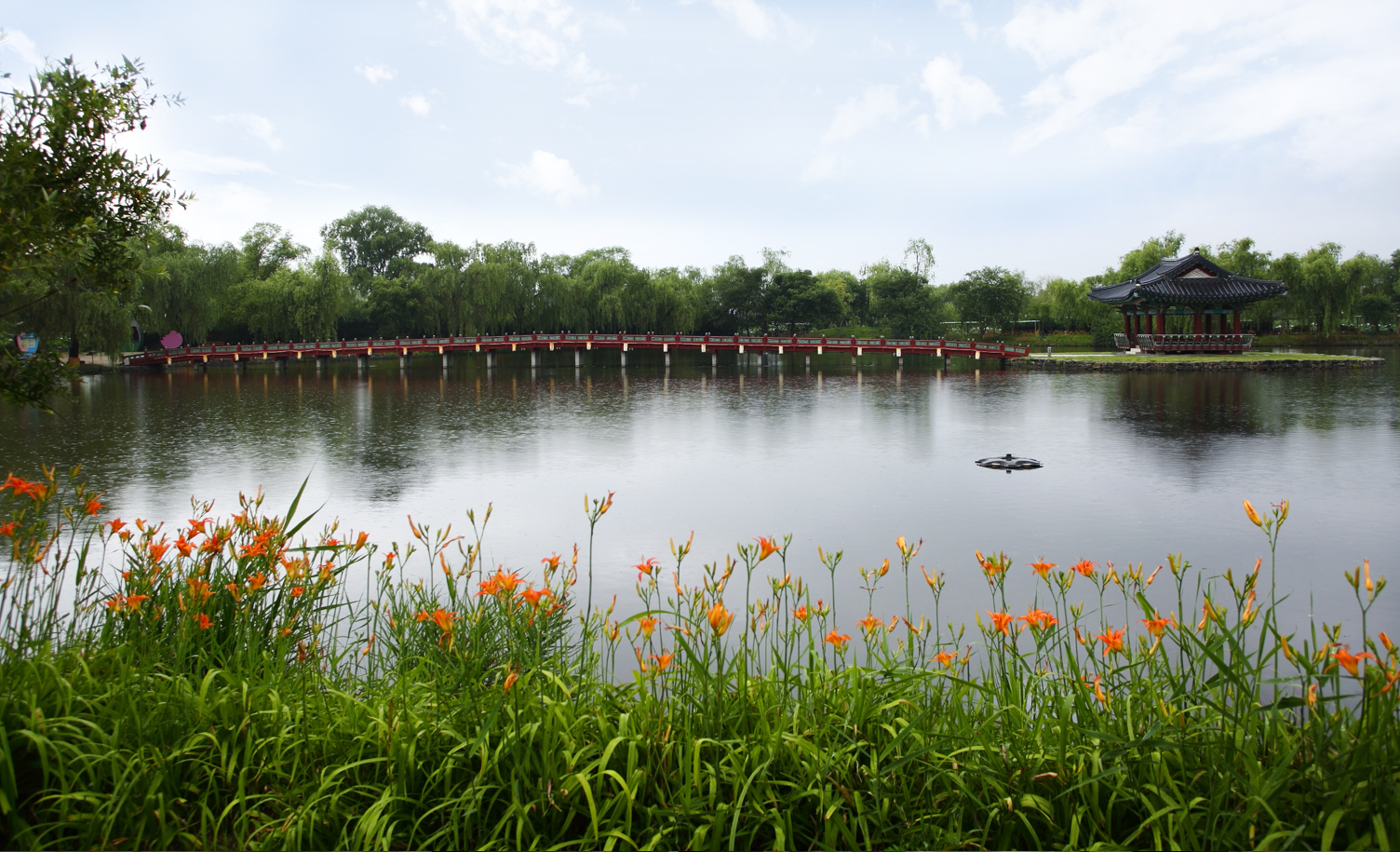
The wide wetland surrounding the pond is covered with over 50 kinds of lotus flowers and a range of aquatic plants and wild flowers.
Created as a pond in a royal villa in the era of Baekje Kingdom, Gungnamji became the nation’s first artificial pond. Samguk Sagi, a historical record about the three ancient kingdoms, provides that “the pond was dug in March in the 35th year of King Mu (634 A.D.), to which water was drawn from over seven kilometers afar. Willow trees were planted on four hills and an island created in the middle of the pond. The king and the queen floated a boat in the big pond in March in the year of 39th year of King Mu (638 A.D.).” This suggests that the size of the pond was much bigger at that time to afford boating.
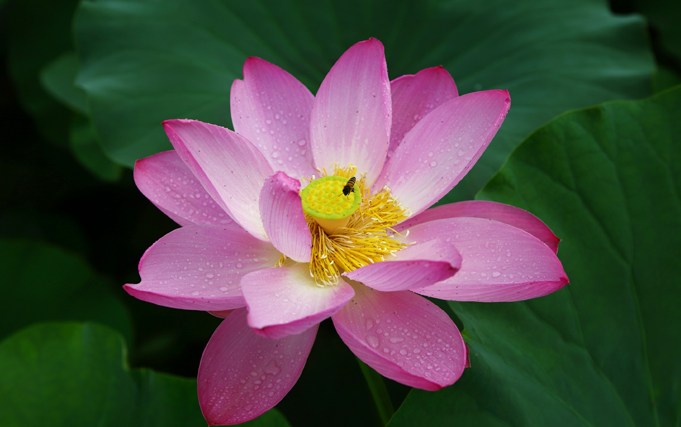
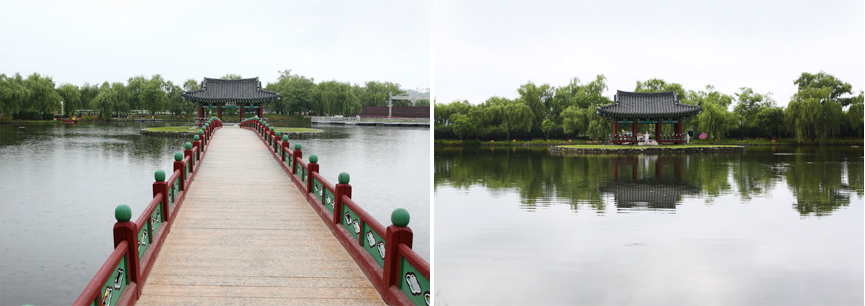
The pond had been known as a natural wetland until the early 1960s. When it was found to have been a garden of the ancient royal palace, a restoration project was conducted from 1965 to 1967 to repair the pond similar to its original state when it had been first made by King Mu. In 1971, Poryongjeong Pavilion was built inside the pond like an island, and a wooden bridge was added to connect it to the land.
The brave wins the beauty
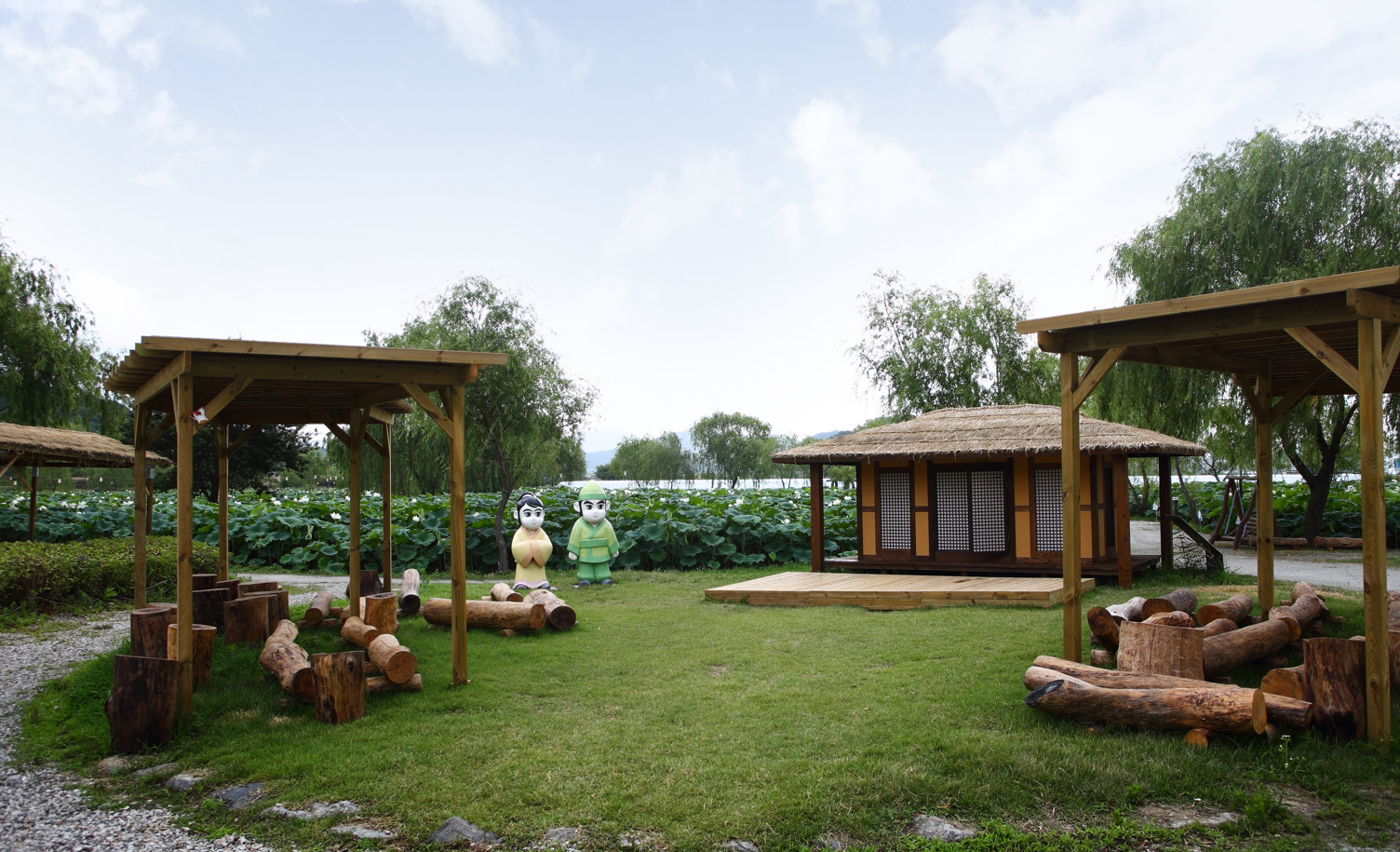
Seodong, a young man from Baekje, once heard that the third daughter of King Jinpyeong of Silla,
the Princess of Seonhwa, was very beautiful, so he packed and went to the capital of Silla.
He handed out free goods to the kids in the village and taught them a song about the princess’s love story, which was later called “Seodong’s Song.”
When the song spread so widely and eventually reached the royal palace in Silla,
the king was so embarrassed about his daughter’s scandal that he sent the princess into exile.
Seodong approached the princess, stricken by sadness and frustration, and asked her to go with him.
Falling in love with this reliable man, the princess accompanied Seodong back to Baekje.
This young man later became King Mu, the 30th king of Baekje Kingdom,
and Gungnamji Pond was what the king made for Princess Seonhwa, who became his wife.

As if showing the couple’s love, the lotus flowers in the pond evoke a romantic, picturesque scenery. Walking the trail around the pond and looking at the flowers emitting a mystical and wondrous atmosphere, visitors experience the serenity and calmness of the old hermit kingdom. Lotus flowers are naturally associated with Buddhism, mainly because they represent elegance and nobility as clean flowers blooming in a swamp or mud inside a pond. Just like colorful lamps floating in the pond, the lotus flowers complete the fascinating landscape.
Breath of Baekje in the ancient capital of Buyeo
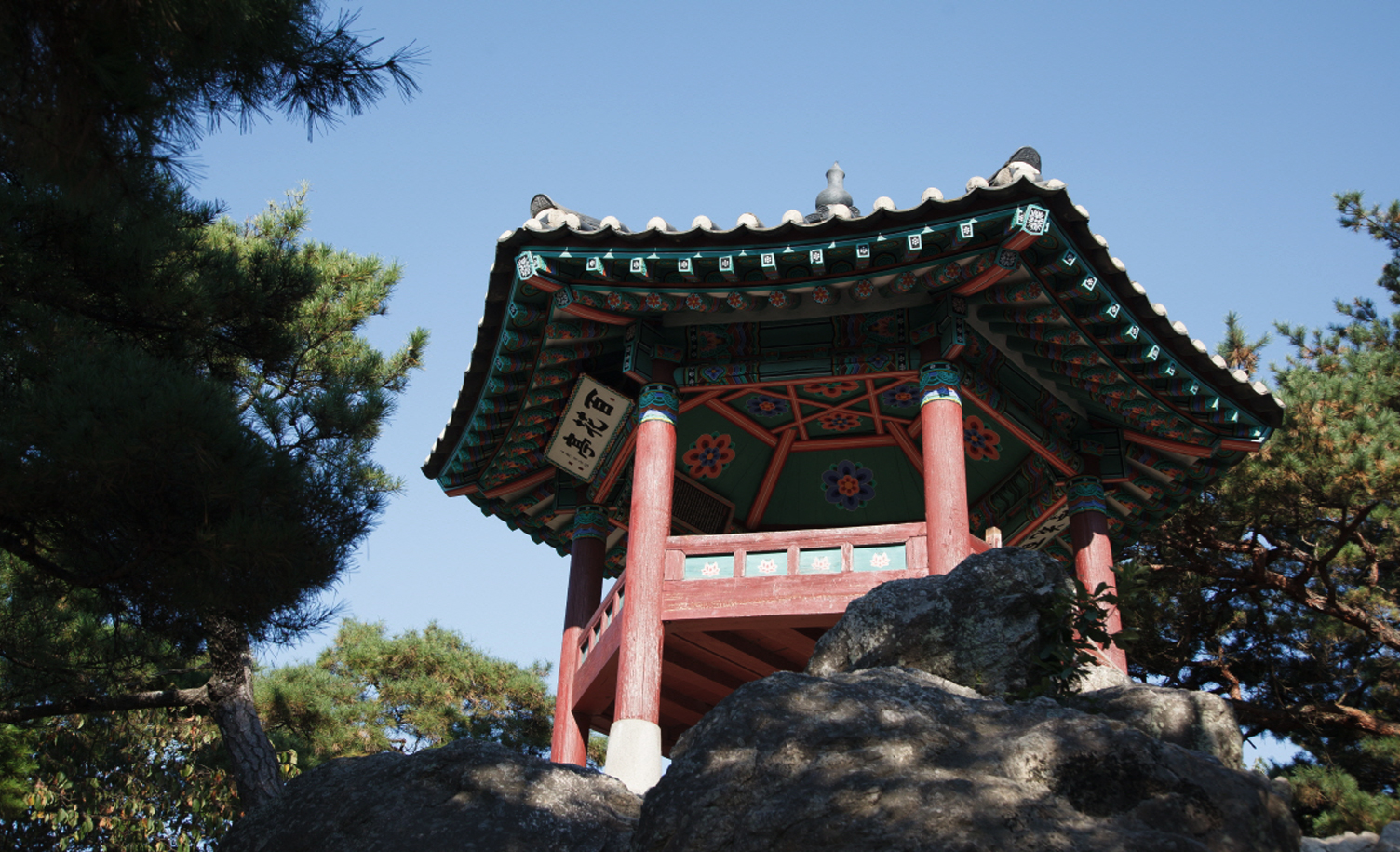
Standing there throughout the long history from the time when Buyeo was the last capital of Baekje, the mountain watches over the historical city.
A walk along the ridge brings the visitors to Yeongillu Pavilion. Its name means “a pavilion welcoming the sun,” and it offers a panoramic view and cool breezes.
Below another pavilion on the western side of the mountain is located a large rock called Nakhwaam, meaning “a rock where flowers fall,” looking down at the Baekma River. When the troops of the Tang dynasty invaded Baekje, three thousand court ladies of King Uija threw themselves off the rock instead of being humiliated by the invaders, according to the historical records. The story is surely exaggerated as the rock’s vicinity is not sufficient to accommodate three thousand people. It still well describes, however, the regret and pain of the people during the last years of the golden age of their country.
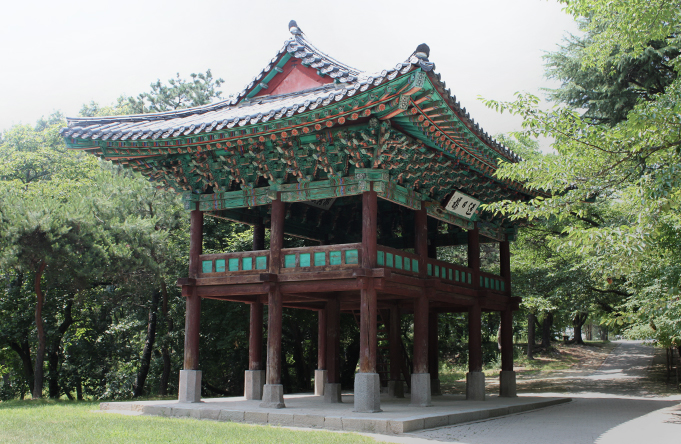
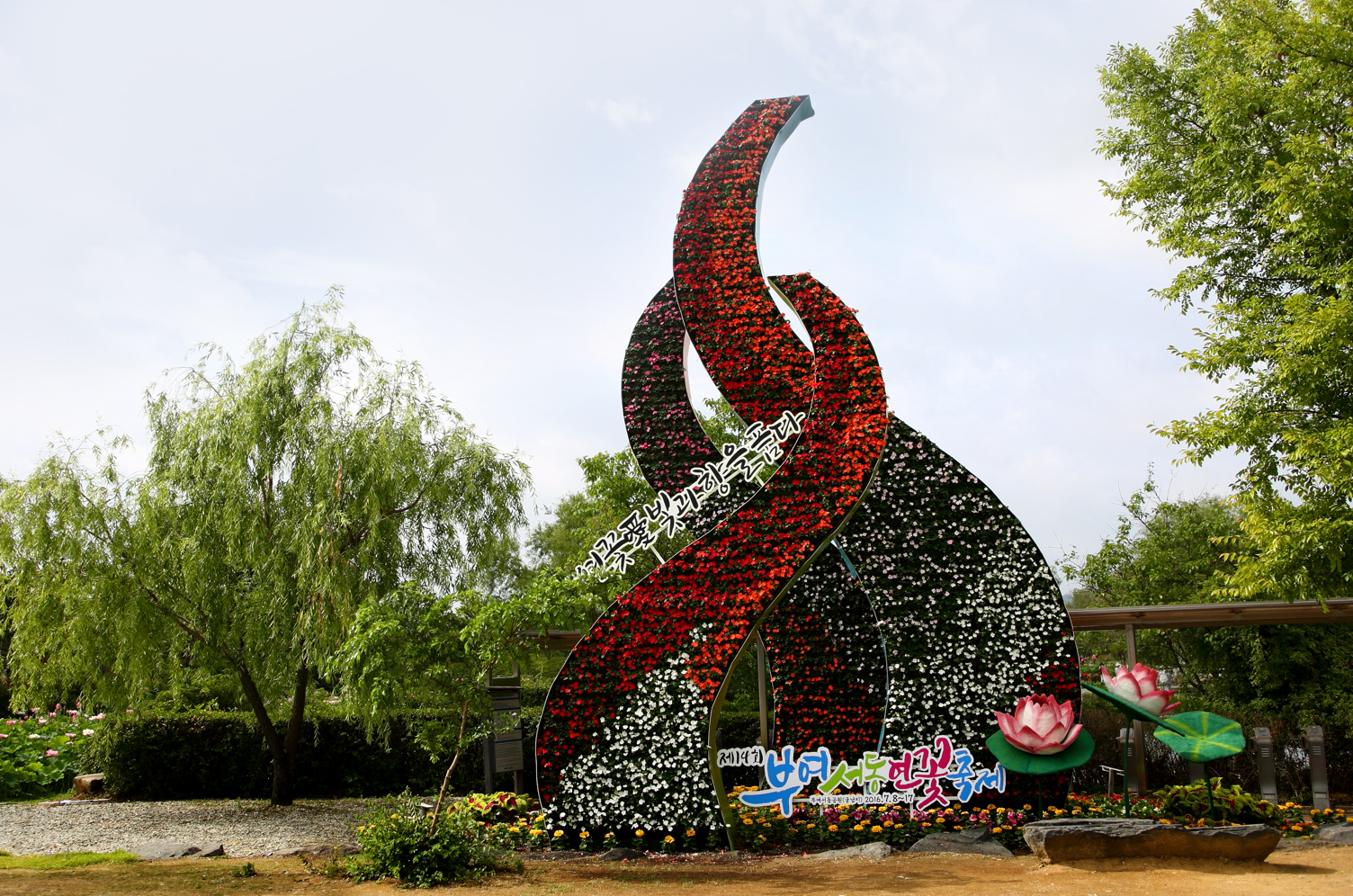
This place is also an ideal destination for family visitors, to ignite the romance of parents through the love story of Seodong and Princess Seonhwa
and to introduce to children a number of scenes of our time-honored history.

